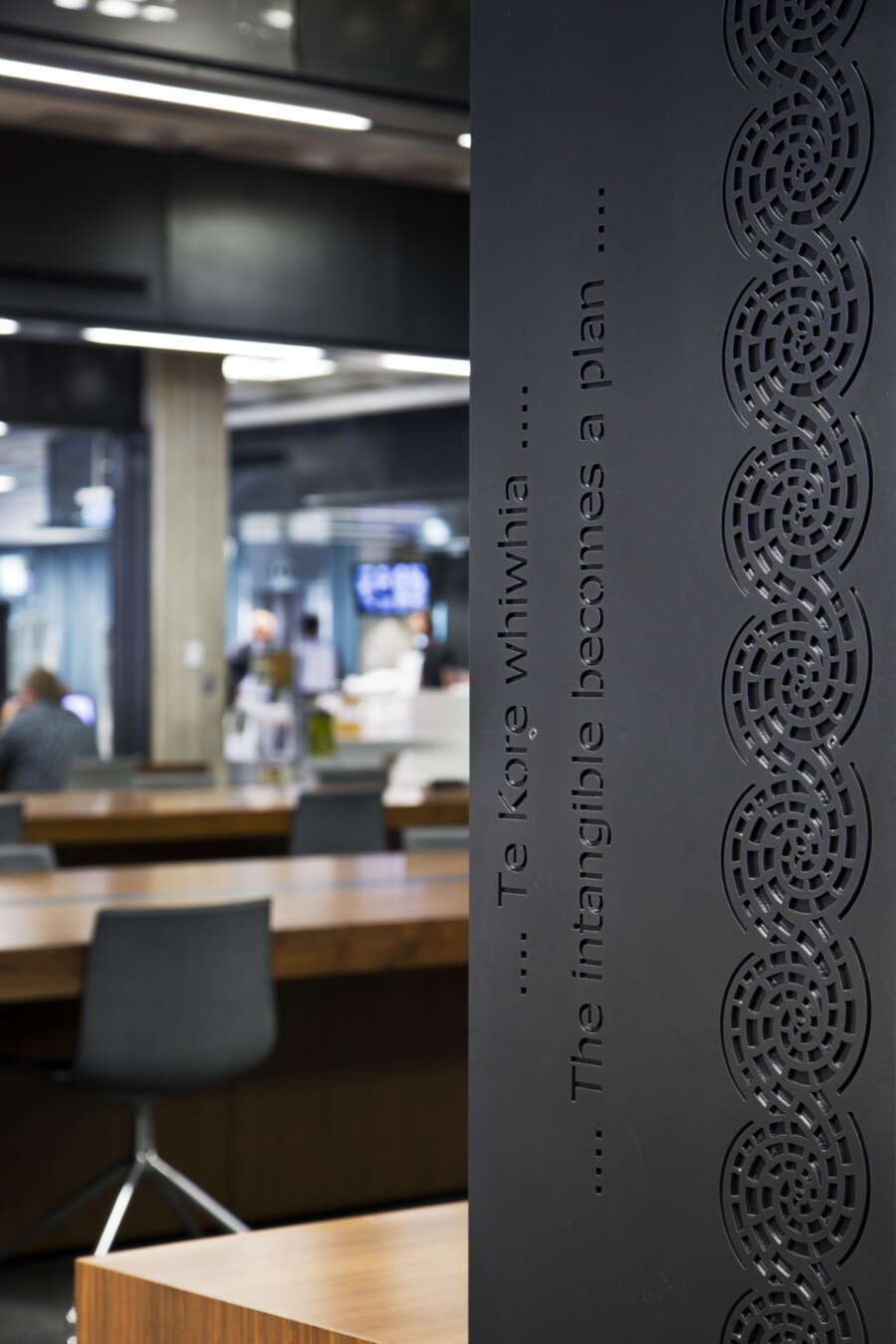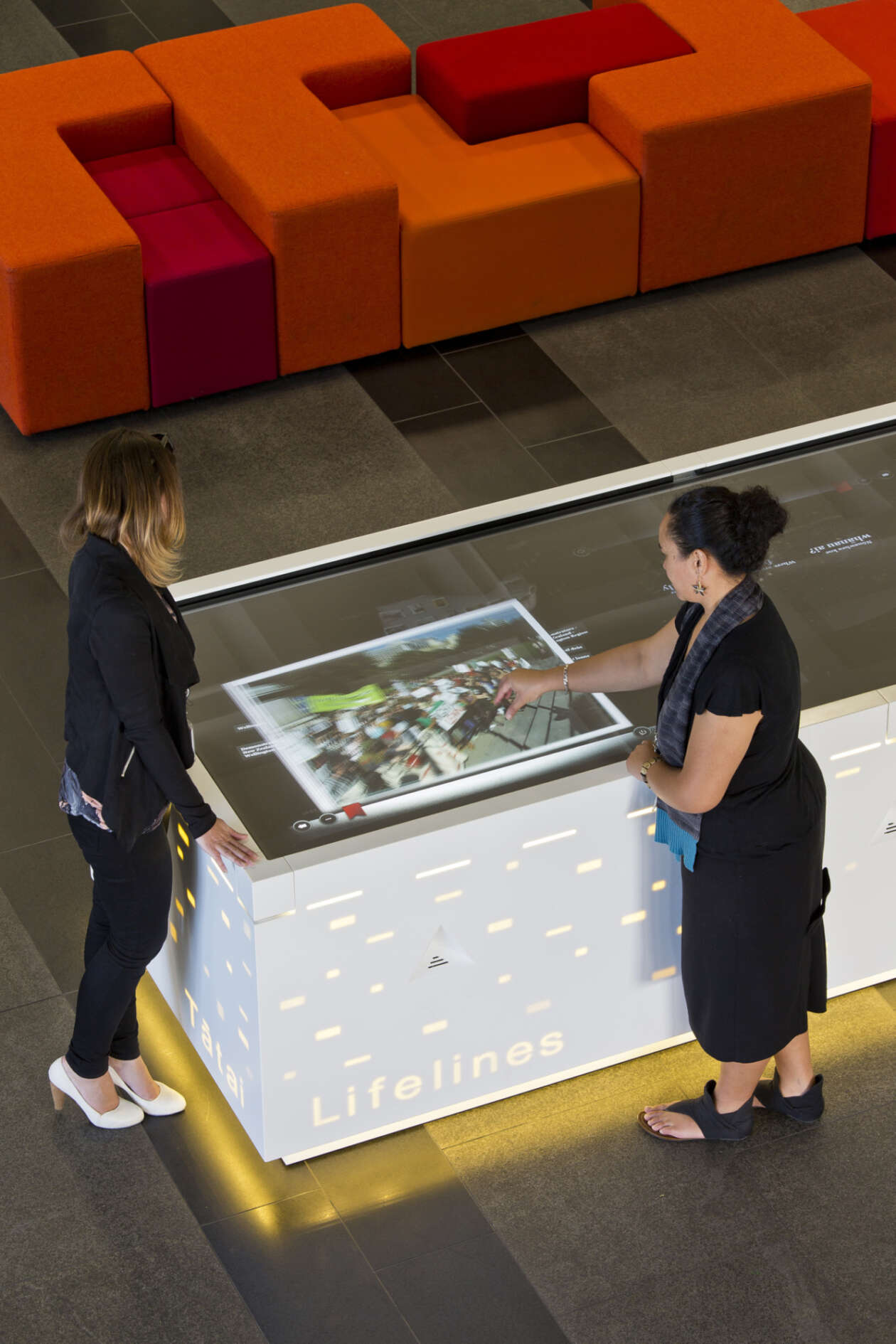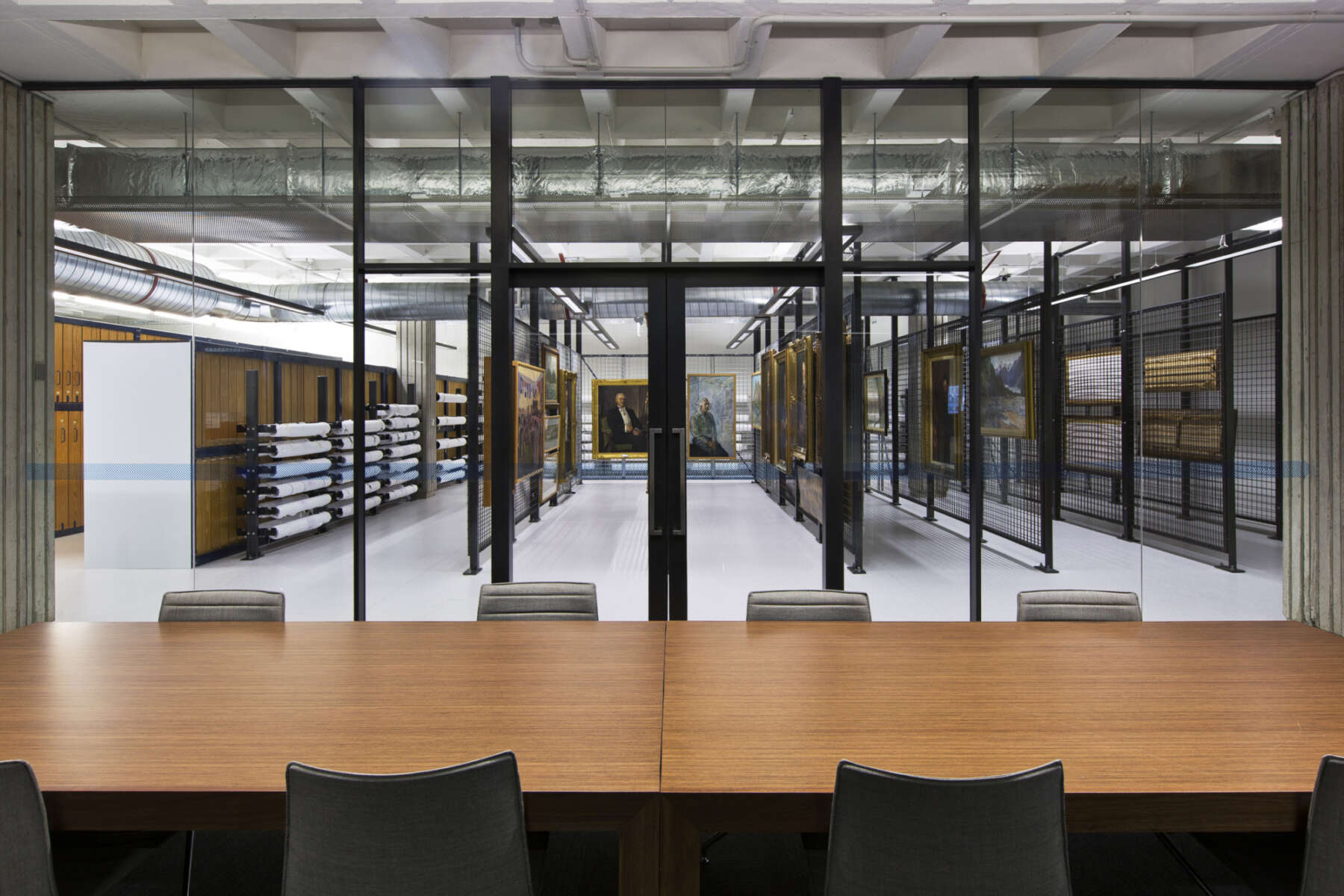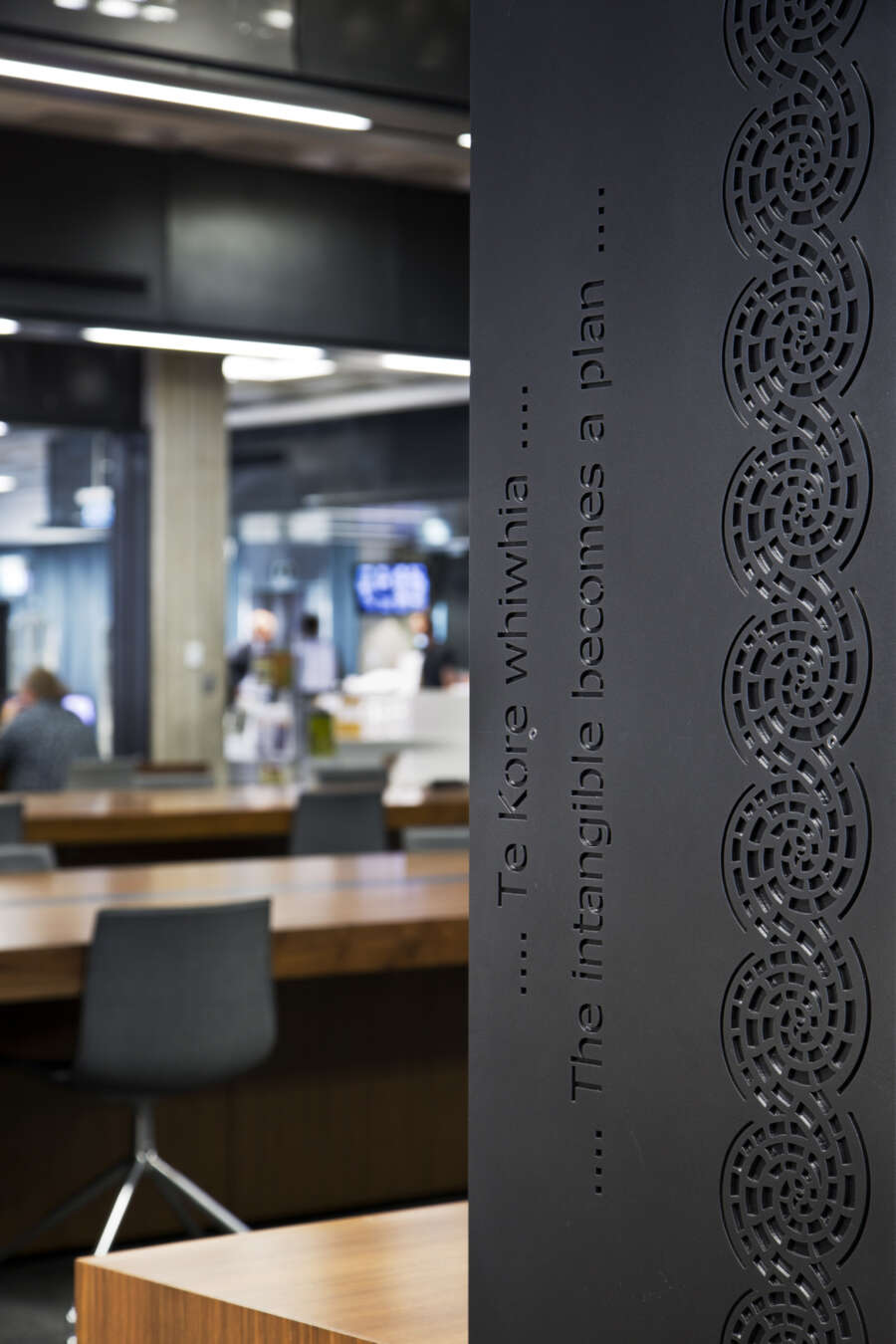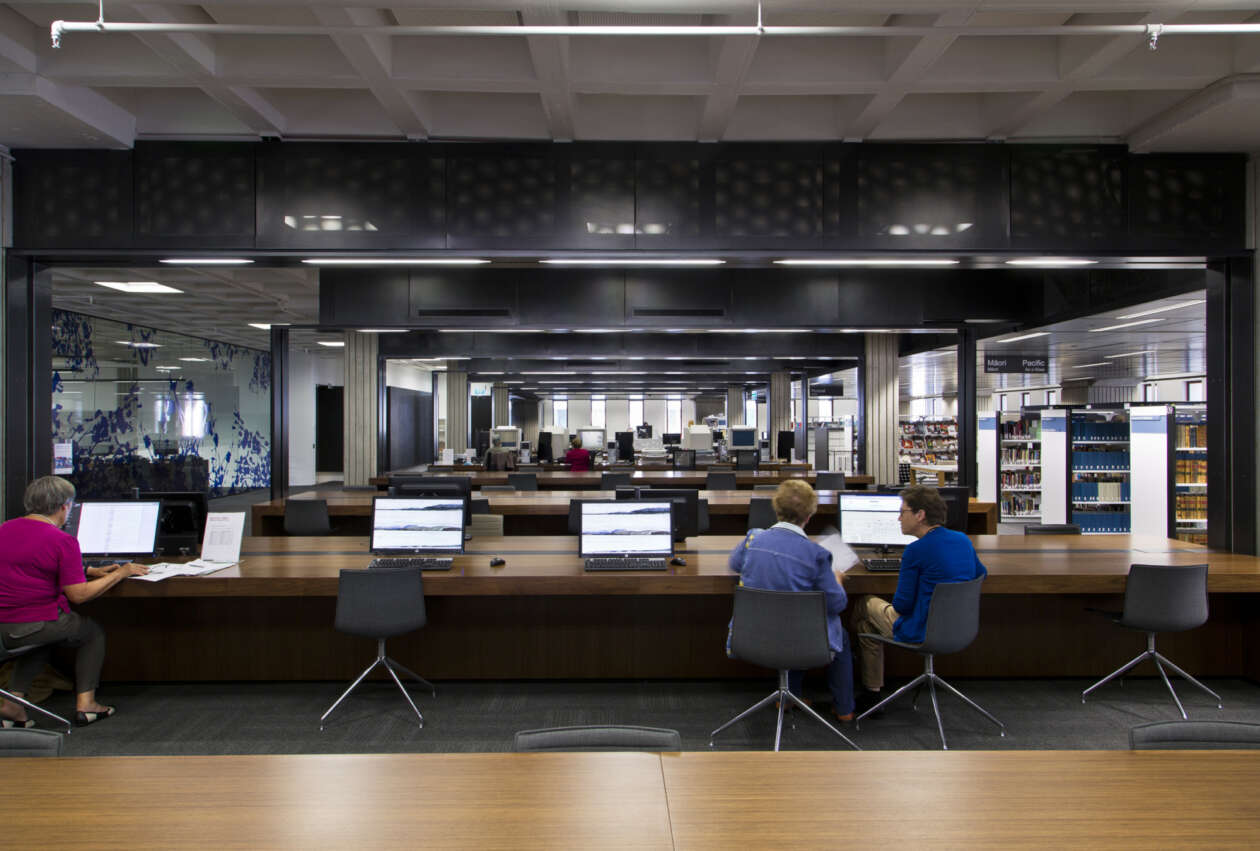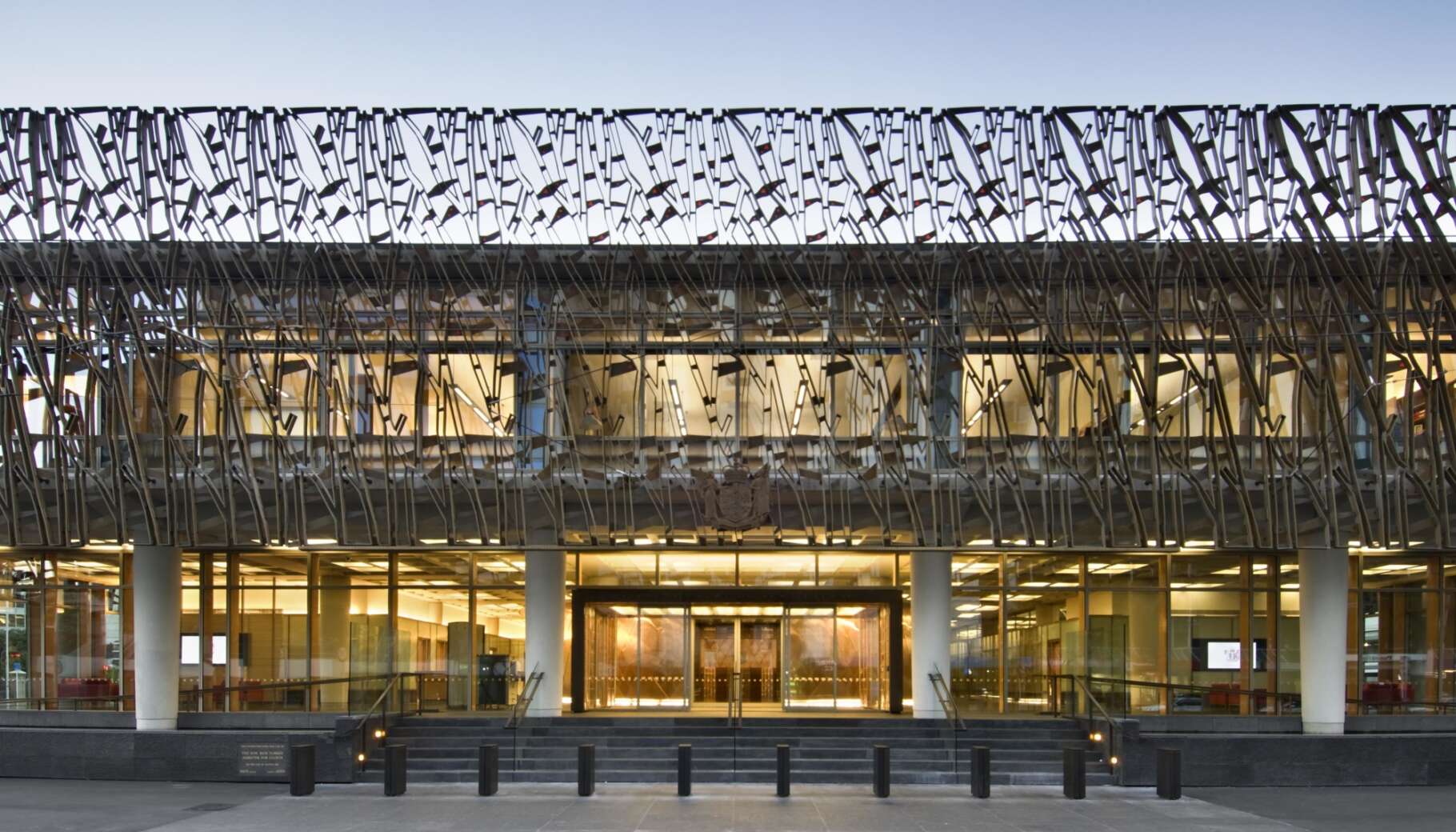The amazing transformation of the National Library has created a state-of-the-art space which embraces technology and delivers an exciting and vibrant place to spend time in.
The brief for the project was to retain the existing building envelope and reconfigure the interior layout to provide secure storage and increased capacity and efficiency for all areas of the building. This was to include a redevelopment of the work place to meet the changing needs of the Library’s staff workspace and to implement the new generation workplace strategy. The collection areas required a capacity increase and remodelling to accommodate projected growth up to 2030. The redevelopment also had to provide increased public access to the National Library and its collections.
The spatial reconfiguration within the constraints of an existing building envelope required innovative design solutions and a complete understanding of the client’s need to deliver services in new and exciting ways. The generous floor plates and column set-out has enabled the creation of larger, adaptive workplaces and public use spaces, and resulted in open, transparent and simplified planning. A remodelled lower and ground floor provides a horizontally and vertically connected space and houses a new art gallery, cafe, exhibition and function space. Collections are stored in a purpose built controlled environment and staff occupy new open plan collaborative work areas.
The select palette of materials integrates with the existing and exposed concrete superstructure. The outcome is a robust and civic ‘canvas’ for the library to evolve and change over time. In key areas the material selections provide a sense of permanence befitting the building’s function as a public facility. A small number of large scale, carefully placed quality materials were used such as new and re-used salvaged stone, metal and glass. The use of glass has provided a high level of openness and transparency, increasing natural light levels and providing a sense of activity throughout the building.
A key objective was to provide more accessible public spaces that are open and flexible, and through changeable exhibition formats, encourage people to interact with information in a reinvigorated and welcoming environment. A key driver was to change public interaction and help the visitor create their memories through accessing information within highly flexible interiors and multifaceted engagement opportunities. As a building of national significance, the design integrates and embeds bicultural design and cultural references. Permanent elements of the building were cut, engraved and mapped to reflect the current and historical cultural significance of the site and the Taonga it holds.
